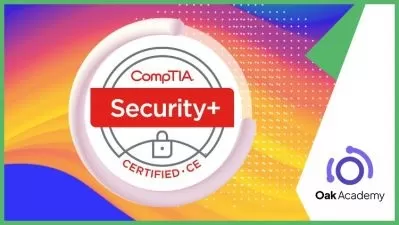Implementation of Secure Solutions for CompTIA Security+
Christopher Rees
6:12:43
Description
This course will teach you the fundamentals and key concepts around secure protocols, hardware and software technologies, and various use cases to illustrate how they function to keep a company’s assets and data secure.
What You'll Learn?
In this course, you’ll learn about the various ways you can secure your company’s systems, network and data using secure protocols, hardware and software. First, you’ll learn about secure protocols and their various use cases. Next, you’ll learn about the hardware that helps harden a company’s security posture including endpoint protection, encryption mechanisms, database and application security, and network access control. Next, you’ll learn about securing WiFi and mobile solutions, along with protecting data in the cloud. Lastly, you’ll learn about authentication and public key infrastructure. When you’ve finished the course, you’ll have the knowledge necessary to pass the Implementation domain of the CompTIA Security+ exam as well as the skills required to secure your company’s data both on-prem and in the cloud.
More details
User Reviews
Rating
Christopher Rees
Instructor's Courses
Pluralsight
View courses Pluralsight- language english
- Training sessions 193
- duration 6:12:43
- level preliminary
- English subtitles has
- Release Date 2023/02/07









